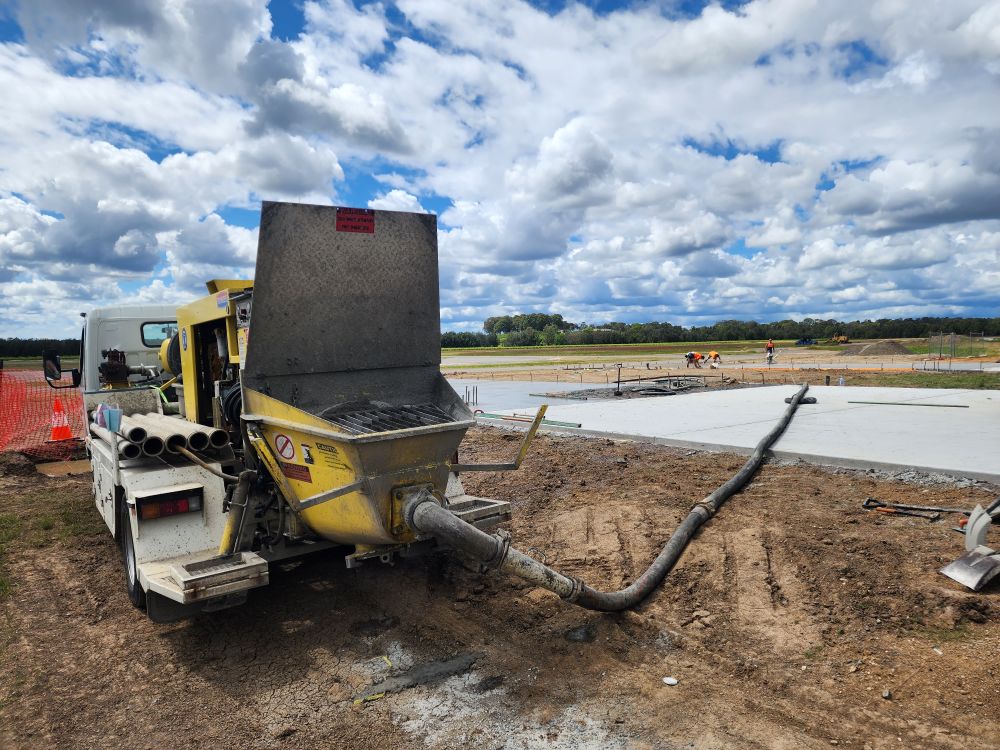Crucial Factors to Consider When Choosing Between Line Pump and Boom Pump Hire
To make a well-informed decision regarding the appropriate concrete pump for your construction endeavour, it is essential to grasp the key differences between line pumps and boom pumps. Line pumps are specifically designed for use in residential projects and challenging access situations, while boom pumps excel in managing high-volume pours and can effectively cover substantial distances. When choosing the right equipment, consider vital aspects such as site accessibility, the magnitude of the pour, and the required delivery rate. By carefully evaluating these parameters, you can confidently determine the most suitable pump that meets the unique requirements of your project.

Explore the Significant Advantages of Using Line Pumps for Your Concrete Applications
Line pumps are meticulously engineered to transport concrete efficiently through a network of steel pipes or flexible hoses. This design makes them particularly beneficial for applications in residential construction sites, backyards, footpaths, and other scenarios where access may be limited. Their compact size and rapid setup capabilities make them an ideal choice for smaller pours, allowing you to boost efficiency without compromising on quality. By selecting line pumps, you can significantly reduce reliance on barrows and lower labour costs on projects where a boom truck may struggle to navigate close to the pour site, thereby streamlining your workflow and conserving both time and resources.
Maximise Project Efficiency with Line Pumps in Limited Spaces
When faced with tight spaces, line pumps serve as a reliable solution for transporting concrete through flexible hoses. Construction teams frequently utilise these pumps for residential slabs, footings, and smaller pours that larger boom trucks often find difficult to access. Their swift setup time coupled with lower operational costs makes them an exceptional option for projects located in constricted areas, such as narrow driveways and congested streets. By opting for a line pump, you can ensure that your project advances smoothly without the delays and complications that might arise from using larger machinery.
Identify Optimal Situations for Deploying Boom Pumps
Boom pumps are mounted on trucks and fitted with extendable arms capable of reaching over buildings, into foundations, or to elevated areas within formwork. This functionality renders them ideal for commercial sites, large slabs, or any high-volume pours where efficiency is crucial. The use of a boom pump facilitates significant time savings, as operators can utilise remote controls for precise placement of concrete, thereby minimising both labour expenses and material waste. If your project demands a substantial volume of concrete and extensive reach, a boom pump is undoubtedly the most effective and efficient tool to fulfil your requirements.
Strategic Considerations for Selecting the Perfect Concrete Pump for Your Construction Project
- For small to mid-sized pours: Opt for a line pump to benefit from its efficiency and cost-saving advantages.
- For large slabs or commercial projects: Always select a boom pump to effectively manage the required volume.
- In confined job sites: A line pump is the optimal choice for access where boom pumps cannot operate.
- When needing to reach over structures: A boom pump can cover significant distances swiftly and efficiently.
Make Empowered Decisions with Hunter Concrete Pumps for Superior Outcomes
Begin your selection process by thoroughly assessing your site conditions. If access is restricted or the pour is relatively small, a line pump generally proves to be the more efficient and cost-effective option. However, for larger projects that involve multi-level buildings, substantial infrastructure work, or heavy pours, a boom pump excels by delivering higher volumes of concrete quickly, effectively eliminating the need for excessive handling.
In the Hunter Valley and Newcastle areas, it is common to see line pumps employed for projects such as driveways, footings, and pool constructions. In contrast, boom pumps are preferred for tasks that demand a high volume of concrete or require vertical reach, including bridge decks, multi-storey buildings, and industrial pads. By understanding these specific applications, you can make the most informed decision regarding your concrete pumping requirements.
The Article: Line Pump vs Boom Pump: Choosing the Best for Your Build first appeared on https://writebuff.com
The Article Line Pump vs Boom Pump: Which Is Best for Your Project? Was Found On https://limitsofstrategy.com

